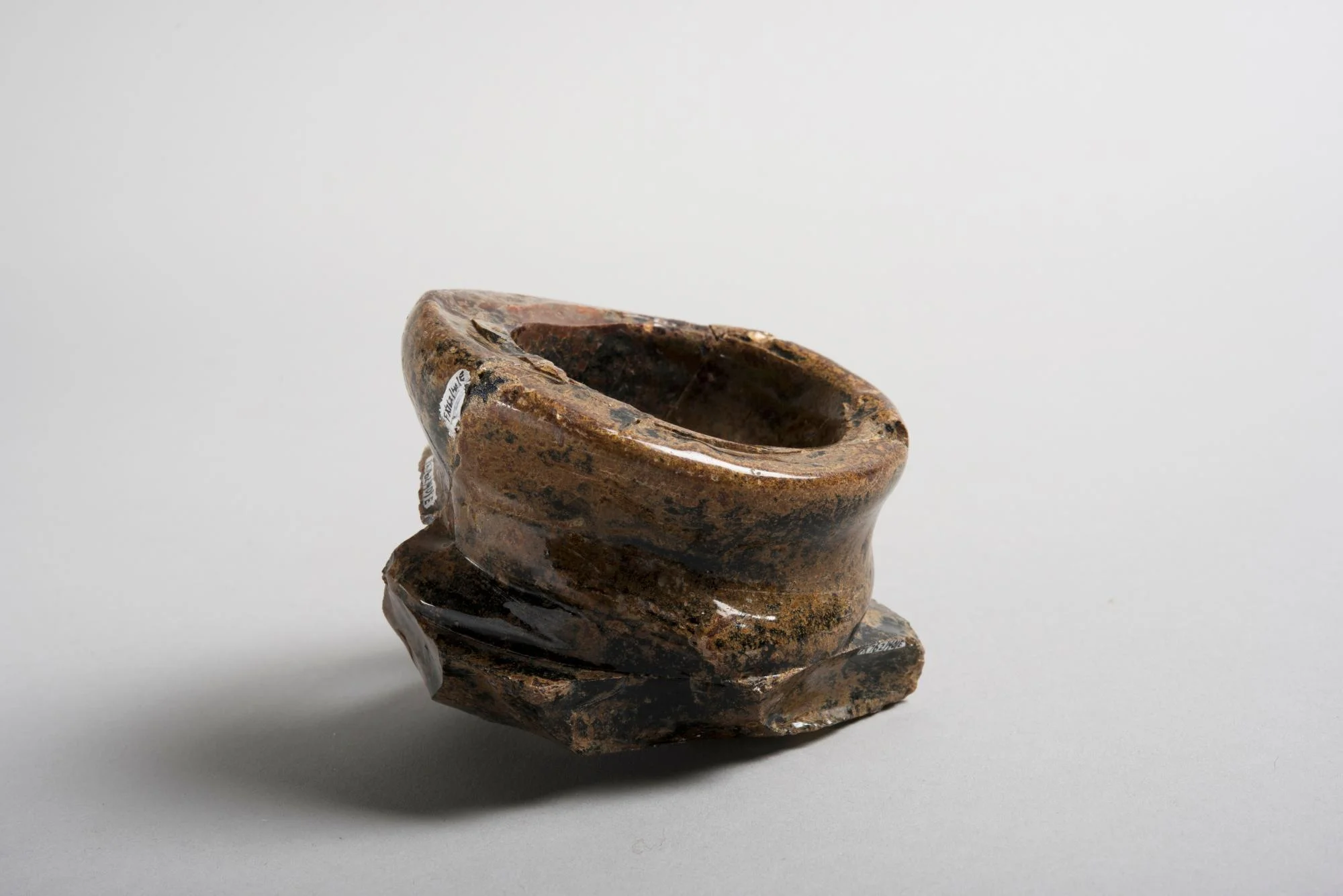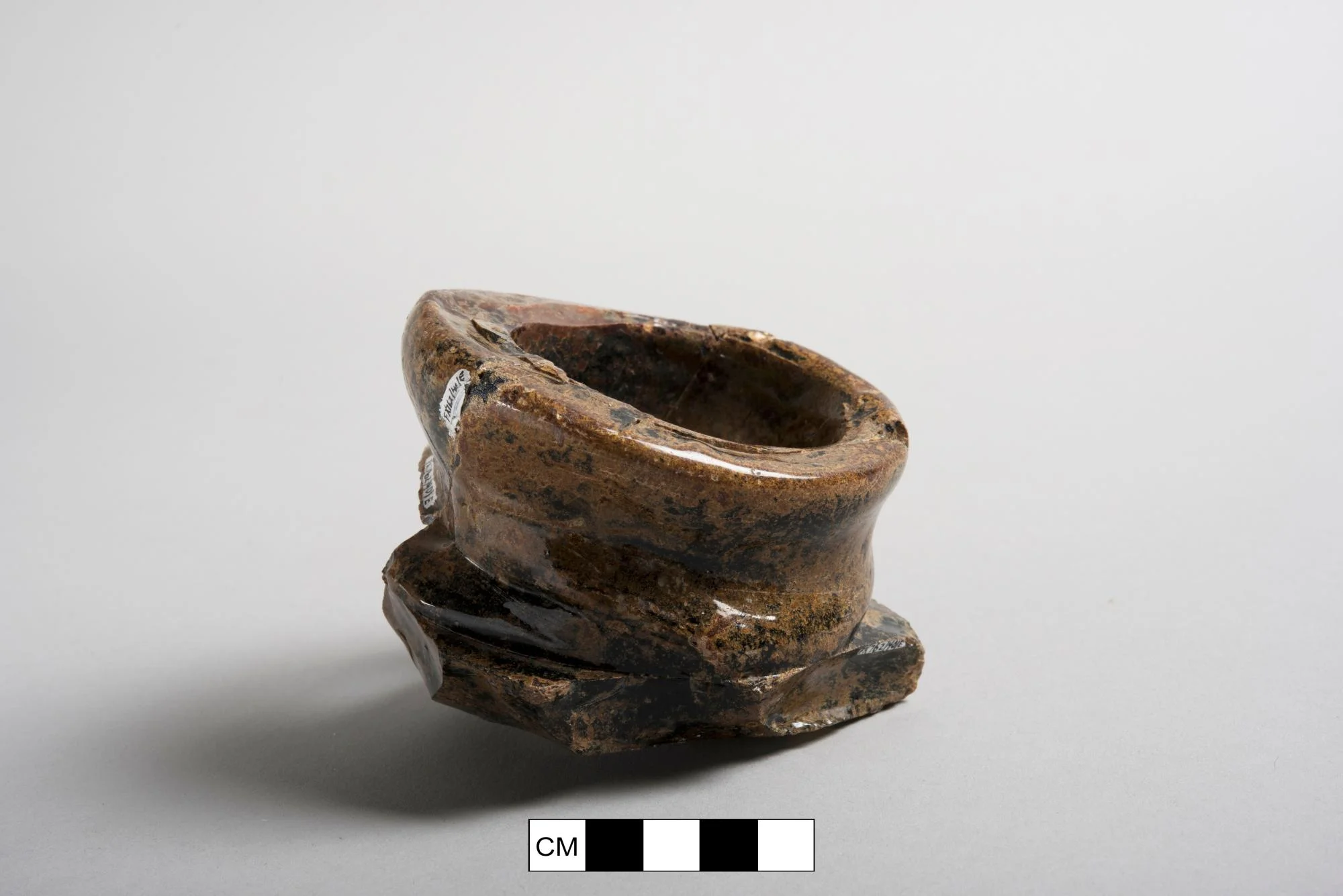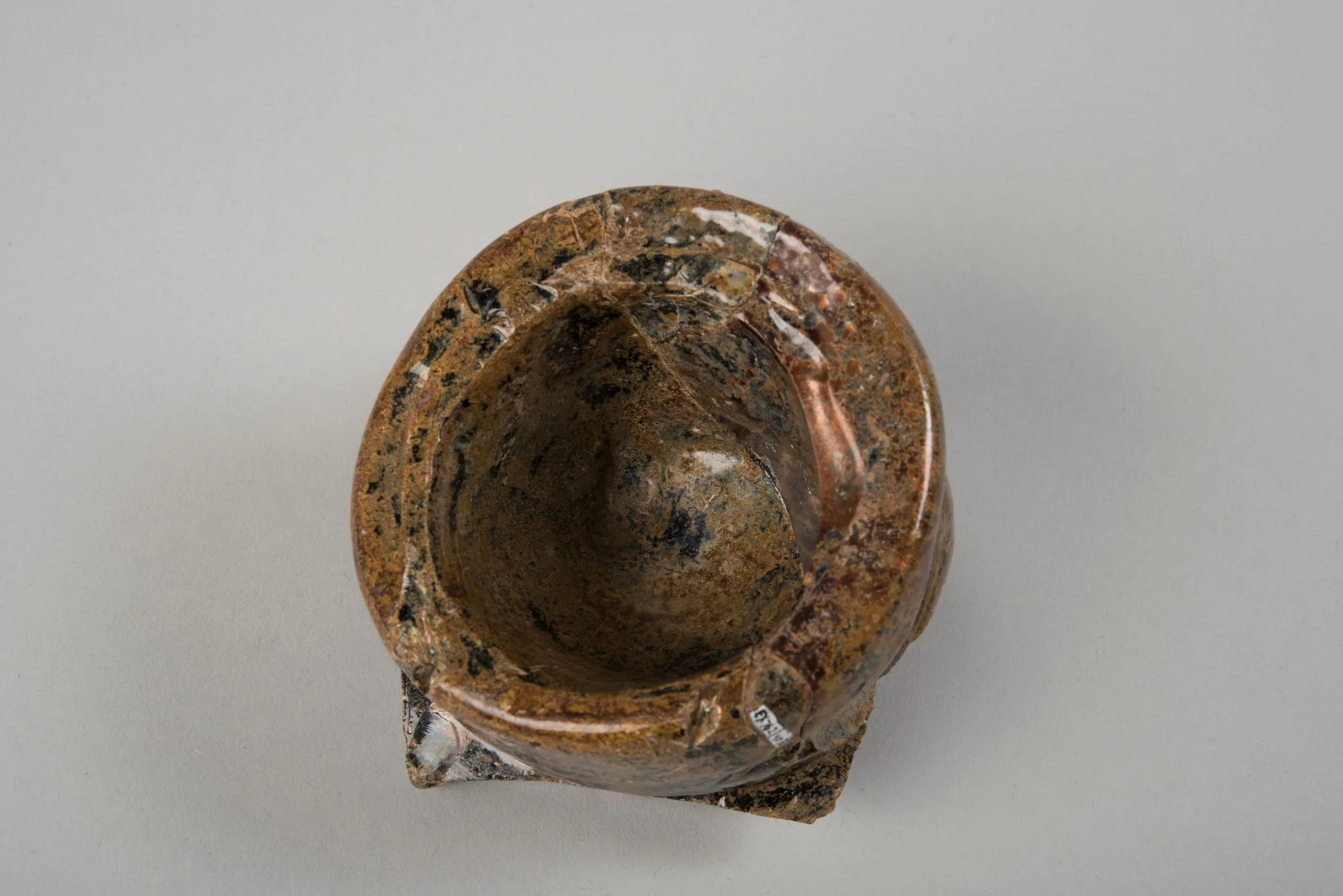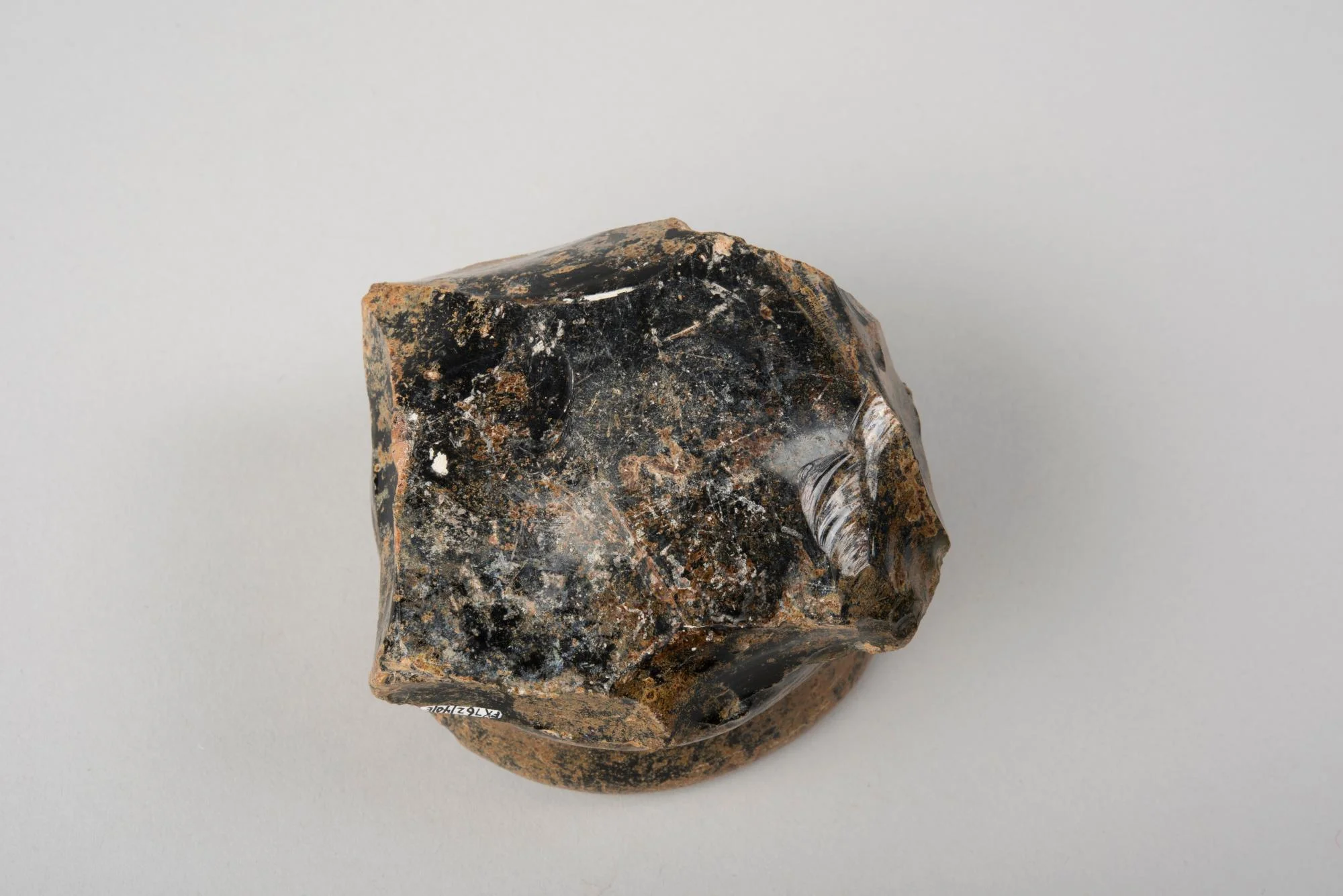Notes
While the material of this fragment of dark green glass seen here is similar to that of eighteenth century wine bottle, it is of a completely different form. The object is a bell jar or glass dome. These domes flared at the mouth and the rims were often folded back over onto themselves creating a slightly reinforced edge. Atop the bell shaped glass a handle of sorts, called a knop, was formed by winding a ribbon of molten glass around itself in a roughly circular shape, which can be seen on this fragment.
Bell jars of this nature were set over tender seedlings, or to create warmer microclimates, in eighteenth century gardens. Washington ordered one and half dozen “Bell Glasses for Garden” in 1759 from his London merchant Robert Cary, and appears to have received them the following year. Items such as these would have been important tools in the horticultural development and maintenance of the gardens, including planting and tending young seedlings of edible crops, as well as, seeds sent to Washington from a variety of European and American contacts. Much of this work was conducted by enslaved men and boys, whose skill played an important part in Washington’s horticultural success.
Object Type
Has it Been Conserved?
No
Where Was It Found?
Project Site: House for Families [more details]
Material
Vessel
Manufacturing Technology
Form
Completeness
Date
18th century
Country of Origin
Dimensions
100mm x 0mm x 100mm (W x H x L)
Illustration shows object in comparison to the size of a quarter
Weight
487.3 gram(s)
Object Number
1781865. WBG V.14
DAACS Number
1781865
Project: House for Families
The structure identified as the “House for Families” on the 1787 Vaughan plan likely housed the majority of the enslaved population living at the Mansion House Farm for much of the second half of the eighteenth century. The building was in existence from circa 1760 until it was demolished in late 1792 or early 1793. The archaeological evidence for the structure consisted of a brick-lined storage cellar (44FX762/40-47) measuring roughly six feet by six feet. Historically the cellar served as a handy trash receptacle once it ceased to be used for its original storage function, and through extensive excavation has yielded an extremely rich assemblage of household refuse. The analysis of these remains offers the opportunity to study important aspects of the daily lives of Mount Vernon's enslaved community.
See All Objects From this Dig



 Glass
Glass